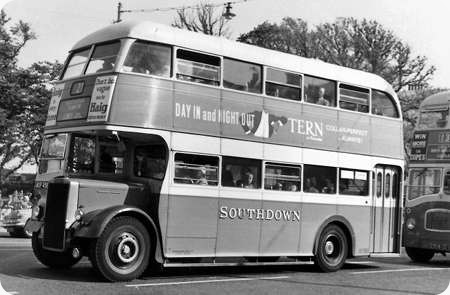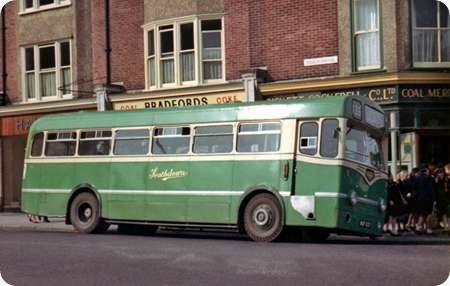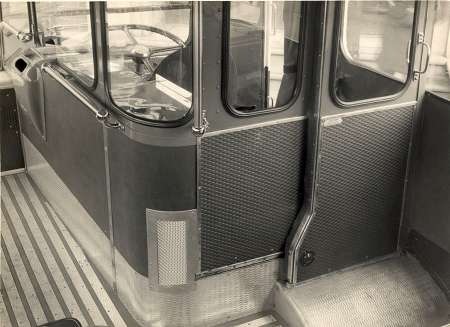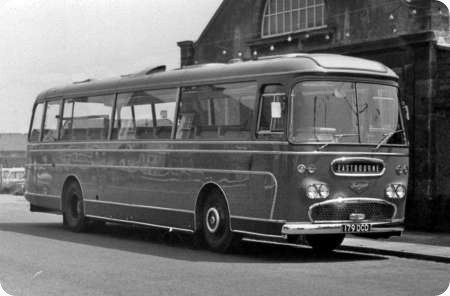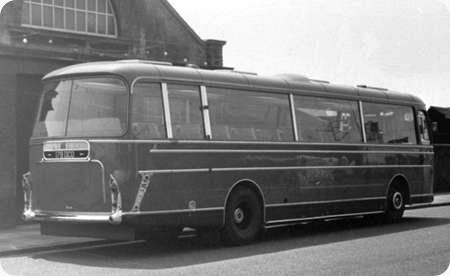Southdown – Leyland Titan PD2 – MUF 456 – 756
Southdown Motor Services Ltd
1953
Leyland Titan PD2/12
Northern Counties H30/26RD
Taken in the summer of 1963 in the Old Stiene area of Brighton this photo is of Southdown 756 one of a batch of ten Leyland PD2/12’s with Northern Counties H30/26RD bodies No’s 755-764 delivered in 1953. These always appeared wider and heavier than any of the other four body builders used by Southdown on their PD2/12 fleet No’s 701-812 the others being Leyland (my personal favourites) 701-754, Park Royal 765-776, Beadle (on Park Royal frames) 777-788 and East Lancs 789-812 Southdown’s last half cabs. Prior to these came No 700 the well known coach bodied PD2/12 with Northern Counties FCH28/16RD body which was trialled on London express services from Eastbourne somewhat unsuccessfully due to body roll and a sluggish performance. This was Southdown’s only 4 bay D/D body and also had small extra windows above the lower deck half drops and quarter lights in the roof.
Photograph and Copy contributed by Diesel Dave
19/05/14 – 09:19
What an odd mixture of styles. The panelling and the roof look like a throwback to the 1930s the foremost and rearmost nearside upper deck windows and the half drop windows have a touch of RT about them yet the front upper deck windows are totally NCME.
Phil Blinkhorn
19/05/14 – 15:39
The Southdown PD2s (701-812) were buses I grew up with in Portsmouth, being seen on a daily basis, although not so frequently used due to my school route being along Copnor Road. Southdown did not have a regular service along that road, so I relied on Portsmouth Corporation routes. The NCME members of that series were my "least favourites", as they all seemed rather "dark" inside. Were the windows smaller? However, they must have been good buses, as Southdown had "discovered" NCME with some of it’s Guy utilities and early post war Arab IIIs, and followed later by 285 Queen Mary’s. When they were new, we didn’t know them as Queen Mary’s, though. I only became familiar with the term many years later (c.1979). Diesel Dave also refers to 700, the PD2/NCME coach. It’s final years were spent at Bognor, and I saw it several times parked in the yard at the back. It didn’t seem well used! Rather a shame when other operators like Ribble and EYMS made good use of a small fleet of double-deck coaches. It’s a puzzle that Southdown didn’t succeed when others could, and did.
Michael Hampton
19/05/14 – 17:59
I also grew up with the Southdown PD2/12’s on Route 22 (Brighton – Midhurst) travelling to school at Steyning, and vesting grandparents in Brighton. NCME bodied ones were my least favourite, and agree with Michael that they always appeared dark inside, probably due to the brown rexine panelling and varnished wood strip below the window line, and also the half glazed doors. Southdown specified half drop windows up to 1955. All 1956 deliveries of PD2’s and Arab IV’s had sliding vents. My favourites were the East Lancs versions. These had fully glazed sliding doors, and the platform areas were finished in green rather than the murky brown previously used.
Roy Nicholson
09/01/15 – 05:52
Like Michael Hampton, I also grew up in Portsmouth riding the PD2/12’s. A big thank you to Diesel Dave for the data on the bodywork. One thing that has been bugging me for years – which of the bodies had the sliding door?
Frank Bulbeck
Quick links to the - Comments Page - Contact Page - Home Page
